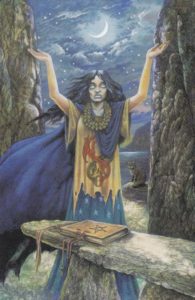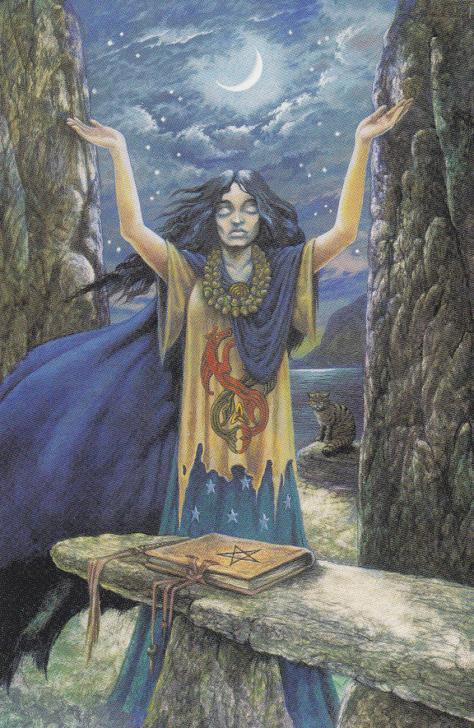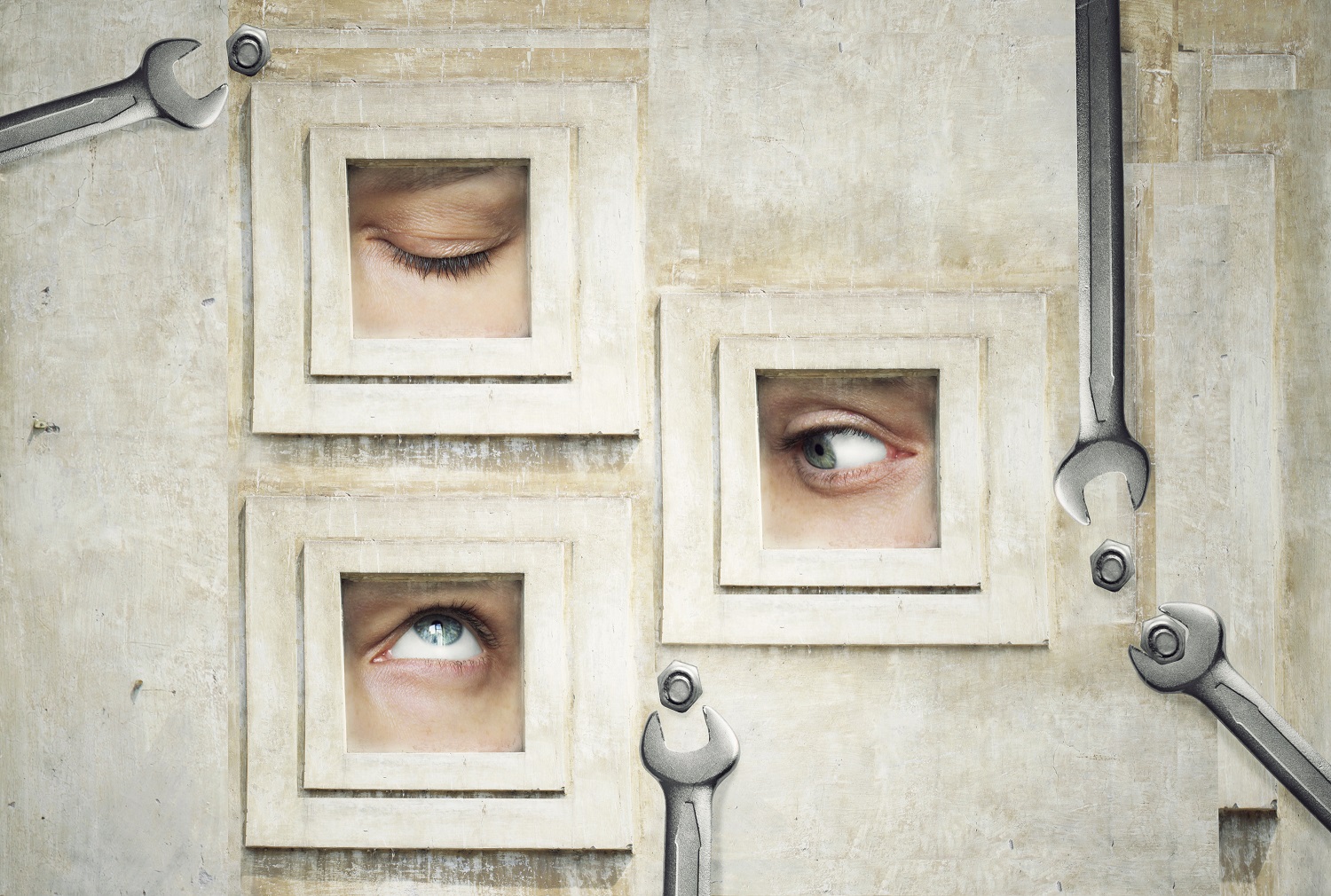
Just the other day, I took a walk along the beautiful golf course opposite my house here in Melbourne to clear my mind from hours of writing and found myself wondering why the opposing concepts of “fate” and “free will” have co-existed alongside one another despite the fact that they’re underpinned by opposing philosophies.
Have you ever climbed to the top of the mountain, growled, flexed your muscles and felt like you could lift a semi-trailer off the ground or run with a tonne of bricks on your back without tiring? Its times like this that we become possessed by spring-morning cheerfulness, that sense of wonder that more often than not convinces us that we are able to actively change the course of our lives as well as the lives of our family and friends. It’s like an unexpected adrenalin rush, or a psychedelic drug that activates serotonin receptor blockade to induce euphoria before smashing us upon the deflated and weary reef of withdrawal. Suddenly, we’re not at the top of the mountain any more. Far from it. Now we’ve “fallen” into the freshwater torrent below, an unrelenting current of contingencies whose course cannot be diverted. During this time we feel helpless and victimised. We’re cold, fearful and ominous, as if we’d magically been transported into the mind of Oedipus the exact moment the Delphic Oracle decreed that he should “mate with his own mother, and shed with his own hands the blood of his own sire.” The further we’re swept along, the more futile the struggle becomes. We’ve suddenly become victims of circumstance, of “Moira or fate”, no longer Kings and Queens of our own destiny.
More often than not, we find ourselves at the foot of the mountain, struggling against the current, but once in a while we’re beating our chests at the top of the mountain. The optimistic disposition that the action brings knocks the dark veil from our eyes and reveals a world in which our intellect generates a very real freedom from the mechanical laws of the universe. And the few glimpses of it we’ve had on a collective level have changed the world, sometimes for the better. In the last hundred years or so, scientific method has invented nanotechnologies, iPods, computers, webcams, artificial intelligence in robots and supersonic transport. It has actively engaged research to cure lethal ailments and understand the nature of the cosmos, as well as having substantially improved quality of life for the disabled. All these god-like feats have come about through spring-morning cheerfulness, and the mere fact that the sentiment is scarce and discontinuous should validate the reach of its “magical” powers, its propensity for both growth and change.
To illustrate a valid and relevant point about the perception of god-like feats I wish to revisit a moment in Dan Brown’s novel The Lost Symbol. When Harvard symbologist and superhero Robert Langdon mentions god-like feats enacted by the Founding Fathers of the United States, Inoue Sato, the Director of the CIA’s Office of Security, ridicules him by stipulating that “laying a cable along the floor of the Atlantic Ocean is a far cry from being a god”. Of course Sato was merely thinking within the insular limits of twenty-first century rationalism and could be forgiven her treason for disregarding the hermeneutics of culture. As we evolve, our definition of “god-like feats and “god” changes to harmonise with the evolutionary step forward. Consciousness, collective or otherwise, is not constant or motionless; it is fluid and volatile, like the mercury in a thermometer. Consciousness can evolve, or alternately devolve, at any time. It is not confined to a one-way street.
Getting back to the issue at hand, the orthodox and dogmatic scientific method of twenty-first century rationalism precludes the acquisition of knowledge through foresight; in other words it decrees that the future is undetermined. But is science right in making this assumption? Probably not.
For time immemorial, mystics and mediums have insisted that there is a way of “knowing” that is far superior to any reality underpinned by knowledge gained from the five physical senses. They have a way of extracting knowledge from the information universe that is as easy and simple as switching a light on. It involves a shift of consciousness facilitated by self-hypnosis in which the conscious Self inverts itself or is projected into the non-conscious Self. Requisite to the process is a localisation of energies to the solar plexus region of the body, and the accumulation of psychic force is what enables the now inwardly-turned ego to inject itself into another dimension; a nonsensical, atemporal world of abnormal double-vision. I call it double-vision because it is a realm in which what was, what is, what is coming-to-be, and what will come-to-be exist as a single unity. There are no angles, opposites or conjunctions. This is an entirely curved world where every feeling, emotion, impression, thought and image merges into and is expressed through something else. I believe Peter. D. Ouspensky, the devoted follower of Greco-Armenian mystic George Gurdjieff, described it best when he said, “The new world with which one comes into contact has no sides, so that it is impossible to describe first one side and then the other. All of it is visible at every point…”
And what do the mystics and mediums call this One, this fundamental unity? It has been ascribed many different names throughout all periods of human history. Some choose to call it the Astral Light or film upon which everything that has every transpired is imprinted. Helena Petrona Blavatsky’s school of theosophy and Rudolph Steiner’s school of anthroposophy both called it the “Akashic aether”. Democritus, the laughing philosopher from Abdera clearly spoke of it in the context of “eidola” (a type of aetheric radiation). It is alchemical mercury, Cypriot magus Spiros Sothis’s Noetic plane, and the second plane of Thomas Charles Lethbridge’s dimensional spiral. Even the great German philosopher Immanuel Kant acknowledged this dimension of reality which he called the “noumena”. These were interference patterns that could be grasped through intuition alone, and which were henceforth reduced to mere “phenomena” when transliterated by the subjective scope of the senses. Just like the mystics, Kant believed that time and space was wholly an illusion of the senses.
Of the aforementioned, Thomas Lethbridge was the one who adopted a particularly scientific approach by using a pendulum to determine a vibrational rate for each object and substance. Immaterial things like emotions and ideas also had rates, which spurred him to the realisation that everything, tangible and intangible, must be composed of vibrations. His view definitely corresponds with M-theory, a fundamental framework for the universe put forth by modern theoretical physics in its desperate attempt to reconcile quantum mechanics and general relativity. The model in question was proposed by Edward Witten of the Institute for Advanced Study and aims to define quarks, electrons and the fundamental forces of the cosmos in the context of one-dimensional oscillating strings that permeate eleven separate dimensions. According to Lethbridge, the dimension parallel to ours, the sublunary or timeless zone of the mystics, becomes accessible to all immediately after sleep and/or just before awakening. Psychic interchange in this stage of sleep would provide a viable explanation for instances of déjà vu, spontaneous insights to problems one has been brewing on for a long time or precognitive visions.
Lethbridge’s assertions seem to sit well with me, for the most part. Why, you ask? Well roughly ten years ago, I experienced a bizarre and rather uncanny phenomenon. For a whole month, I would be ritually greeted by a seemingly real person at the dusk before sinking into the realm of unconsciousness and at the gates which led to the dawning of consciousness. Intuition told me he existed someplace, somewhere on planet Earth. I knew intimate details about him; the shape and contour of his facial features; how he moved and acted; and his virtues and faults. I felt these, I “knew” them. At first I thought he was merely some kind of archetypal projection of the psyche, an angelic guide or a tribal brother-type entity brought forth by my personal unconscious to guide me through what was then a very testing time in my life. But he encompassed a nature so far removed from any flat, one-dimensional archetypal figure that he had to be real. And I was right. Whilst travelling through the United States in August of 2005, I marched into a suburban bistro in the beautiful state of California to be greeted by a barman who I’d met so many times before inside the gates of that otherworld. “Oh, It’s you,” I remember saying as we made eye contact. For me, it was an experiential validation of Lethbridge’s theory.
But does the occurrence of precognitive dreams necessarily denote a future set in stone, a “fate” or “Moira” so to speak? Let’s face it folks, we’ve all been guilty of seeking out astrologers, Tarot card readers, those who divinise through psychometry and psychics at some stage or another. There’s a definite romance to fatalistic warnings, to premonitions and insurmountable, bitter-tasting “fates” that map out our paths. For if we’re all controlled like pawns on a check board by a higher power which has already transcribed everything with a black feather quill and a little black book, then we can just purge ourselves of any self-blame and self-persecution when we are struck by a train of bad luck, self-inflicted or otherwise.
My first experience with a “psychic” nearly destroyed my faith in extrasensory perception completely. Mid way through 2008 I saw a woman who went by the name of a well-known seer in classical mythology (whose name I obviously cannot disclose for reasons of confidentiality). Sadly, she lacked all of her namesake’s talents. She kept alluding to my dead grandmother, who was present in the room, but as far as I knew both my grandmothers were still alive and kicking! She did possess a healthy dose of active imagination though. I very much enjoyed hearing about my past lives. In the life immediately preceding this one, I was a handsome French soldier who’d fought at the helm of Joan of Arc’s army and had fallen madly in love with her. Before that, I was an Egyptian pharaoh who’d carried out a scandalous and furious love affair with a commoner who was my friend’s mother. Hearing all this psychobabble would be enough to turn the rational and scientifically inclined among us away from the paranormal forever. Because the occult is a denomination of inquiry which is by nature speculative and inexact, it has always attracted a healthy sprinkling of charlatans. Operative alchemy, astrology and magic have been the worst afflicted over the centuries, seeing that the short –sighted and less than honourable among us who seek a short cut to fame and fortune will naturally be drawn to the overnight quick fix that miracle-working and gold-making make possible. Despite these shortcomings, my belief in the occult has always stood firm against the drafts; my belief in human virtue, on the other hand, has been habitually tested.
In any case exactly a year later I met a modern-day Pythia of Apollo. Unlike her ancient equivalent, this woman wasn’t theatrical at all. For instance, she didn’t sit atop a tripod breathing in hallucinogenic gases or rolling her eyes in a manner that suggested she was being possessed by a higher entity. No, there was none of that. Sara McQueenie was solemn and simple, a laughter-lover like the goddess Aphrodite. There would be no unwarranted expressions of grandeur, no excessive opulence. Her lair was a middle-class, cosy Australian home whose earth-coloured furnishings evoked serenity and exerted a soothing influence on those lucky enough to visit. I vividly recall her preferences when it came to divination. She didn’t care much for chairs and preferred to sit cross legged on the ground, habits which imply a close connection to and affinity with the earth forces.
The spread of the Tarot deck was her chosen manner of entry into the Noetic cosmos, something which came as naturally to her as drinking a glass of water. Speaking with an authoritative tone which would have marked the visionary ramblings of the Pythias and Sibyls who revealed the golden Word, Sara spoke to me about persons, events and situations which she had no way of knowing about. Most fascinating was the manner in which she spoke. It was poetry in the truest sense of the word and hit every major and minor note on my intuitive scale. I was even given the option of asking five to seven specific questions at the end of the reading. The answers which she gave were strikingly colourful, detailed and precise. Everything that she has revealed up until now has well and truly unravelled. Sara lay bare for me the truth of extrasensory perception, the reality of the mystics which I’d intuitively felt but which had not been experientially verified until then.
So what does the vacillation between the state of spring-morning cheerfulness and the state of helplessness, precognitive dreams, the timeless zone and the mystics who can correctly perceive the future tell us about the “fate” and “free will”? They basically tell us that our individual paths have been hewn against the fabric of the Noetic cosmos, though an active, conscious and controlled effort on the part of the individual can alter the course. Nothing is set in stone. The catch is that we are inherently wired to think and act passively. We’re lazy by nature. Day after day, month after month, we hand off the mechanical and mundane tasks of the day to our inner unconscious, robot while our minds “switch off”. It’s only when we encounter something new and novel, or something that requires a strenuous amount of mental effort that all receptors in the brain start firing in unison again, and we ascertain that spring-morning cheerfulness again.
Remember the Hermetic motif “As above, so below?” Well thoughts and feelings are composed of Noetic matter. The more we brood on them, the quicker the vibrations generated in the timeless zone will seep through the material universe and incite change. As a consequence, any prolonged periods of pessimism will more than likely attract to the individual bad luck in the manner than positive thinking will attract serendipity, the feeling that nothing can go wrong. But the problem for most when it comes to taking a proactive stance is that it goes against the ingrained behavioural pattern of following the path of least resistance, and thus the endeavour might resemble the futile plight of Sisyphus who kept pushing a boulder uphill onto to watch it roll back down, time and time again.
So we do, in fact, encompass the freedom to change our paths, though the habitual leaning towards laziness, fatalism and our willingness to leave ourselves to the contingencies of chance implies that for most the future has been circumscribed.
Today I will leave you with a poem about divination, written for and dedicated to Sara McQueenie.
The Seer
It is she whom women
call Goddess
standing at my helm,
so I cling to her girdle
sightless, like a slave
entranced, abdicating my soul
while she dances
my body down by the
Sibylline Cave.
Laughing, she decrees
riddles parading
in threes to ripen,
then turn loud
on the Eve of the morrow
and soften
the Fall of feet
re-printing old myths
in a sand
which hangs
by a golden thread
in her Tarot.









